#OptimizationTechniques
Explore tagged Tumblr posts
Text
Search engine optimization (SEO) is the process of improving the quality and quantity of website or a web page from search engines. SEO targets unpaid rather than direct traffic or paid traffic.
0 notes
Text
How To Get More Clients for Your Web Design Business

Do you encounter difficulties in finding clients for your web design business? Worry less because I had such a problem before. This complete procedure will provide a comprehensive review of 7 effective strategies which will help to Get More Clients for Your Web Design Business. 1. Leverage the Power of Referrals: In the web design industry, as in all others, referrals are the lifeblood of any business. Be the first to inform your family and friends about your services by initiating contact with them. One never knows who may require a website or who they may know. Positive client relationships may result from word-of-mouth endorsements. 2. Improve Search Engine Optimisation: Implementing search engine optimisation on your website will facilitate the discovery of your web design business on the internet. Concentrate on achieving high rankings for services-related local keywords and your brand name. Enhance the visibility of your website on search engine results pages by contemplating the implementation of SEO reseller services or forming partnerships with SEO professionals. Recommended Freelancer

3. Adopt content marketing: Content marketing is an economical method to attract potential clients and demonstrate your expertise. Develop articles and content that cater specifically to the requirements of business owners, including comprehensive guides on initiating a company or establishing a limited liability company. Establishing yourself as a reliable authority in the field of web design through the provision of insightful information increases the probability that consumers will select your services.Read More… Read the full article
#attractingclients#clientacquisition#clientattraction#clientconversion#clientengagement#clientoutreachtactics#clientretention#DigitalMarketing#growingclientbase#Marketingstrategies#onlineclientacquisition#OptimizationTechniques#PortfolioBuilding#prospectingmethods#SEOforwebdesigners#targetaudience#Webdesignbusiness#webdesignleads#webdesignservices#websiteclients
0 notes
Text
Elevate your online presence with a freelance SEO expert in India. Experience growth-driven strategies tailored to your business needs. Harness the power of targeted optimization techniques to drive traffic and increase visibility across search engines. Let India's finest SEO talent propel your brand towards digital success.
#OnlinePresence#FreelanceSEO#IndiaExpert#GrowthStrategies#OptimizationTechniques#DigitalSuccess#SEOStrategy#BrandVisibility
0 notes
Text
Social Media : Optimization Secrets To Boost The Conversion | Learn Social Media Marketing
youtube
0 notes
Text
Neural Style Transfer (NST)
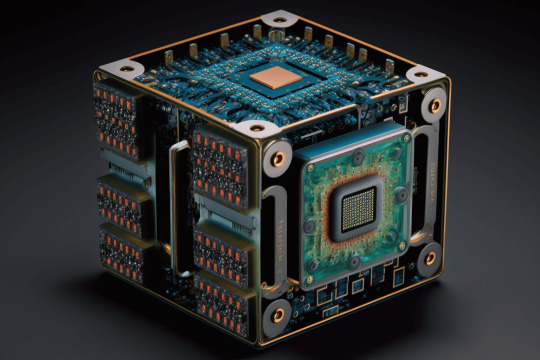
Neural Style Transfer (NST) is a captivating intersection of artificial intelligence and artistic creativity. This technology leverages the capabilities of deep learning to merge the essence of one image with the aesthetic style of another.
Basic Concept of Neural Style Transfer (NST)
Combining Content and Style: NST works by taking two images - a content image (like a photograph) and a style image (usually a famous painting) - and combining them. The goal is to produce a new image that retains the original content but is rendered in the artistic style of the second image. Deep Learning at its Core: This process is made possible through deep learning techniques, specifically using Convolutional Neural Networks (CNNs). These networks are adept at recognizing and processing visual information. Content Representation: The CNN captures the content of the target image at its deeper layers, where the network understands higher-level features (like objects and their arrangements). Style Representation: The style of the source image is captured from the correlations between different layers of the CNN. These layers encode textural and color patterns characteristic of the artistic style. Image Transformation: The NST algorithm iteratively adjusts a third, initially random image to minimize the differences in content with the target image and in style with the source image. Resulting Image: The result is a fascinating blend that looks like the original photograph (content) 'painted' in the style of the artwork (style).
How Neural Style Transfer Works with Python Example
Content and Style Images: The process begins with two images: a content image (the subject you want to transform) and a style image (the artistic style to be transferred). Using a Pre-Trained CNN: Typically, a pre-trained CNN like VGG19 is used. This network has been trained on a vast dataset of images and can effectively extract and represent features from these images. Feature Extraction: The CNN extracts content features from the content image and style features from the style image. These features are essentially patterns and textures that define the image's content and style. Combining Features: The NST algorithm then creates a new image that combines the content features of the content image with the style features of the style image. Optimization: This new image is gradually refined through an optimization process, minimizing the loss between its content and the content image, and its style and the style image. Result: The final output is a new image that retains the essence of the content image but is rendered in the style of the style image. Python Code Example: import tensorflow as tf import tensorflow_hub as hub import matplotlib.pyplot as plt import numpy as np # Load content and style images content_image = plt.imread('path_to_content_image.jpg') style_image = plt.imread('path_to_style_image.jpg') # Load a style transfer model from TensorFlow Hub hub_model = hub.load('https://tfhub.dev/google/magenta/arbitrary-image-stylization-v1-256/2') # Preprocess images and run the style transfer content_image = tf.image.convert_image_dtype(content_image, tf.float32) style_image = tf.image.convert_image_dtype(style_image, tf.float32) stylized_image = hub_model(tf.constant(content_image), tf.constant(style_image)) # Display the output plt.imshow(np.squeeze(stylized_image)) plt.show() This code snippet uses TensorFlow and TensorFlow Hub to apply a style transfer model, merging the content of one image with the style of another.
Detailed Section on Content and Style Representations in Neural Style Transfer
Feature Extraction Using Pre-Trained CNN: VGG19, a CNN model pre-trained on a large dataset (like ImageNet), is often used. This model effectively extracts features from images. Content Representation: - The content of an image is represented by the feature maps of higher layers in the CNN. - These layers capture the high-level content of the image, such as objects and their spatial arrangement, but not the finer details or style aspects. Style Representation: - The style of an image is captured by examining the correlations across different layers' feature maps. - These correlations are represented as a Gram matrix, which effectively captures the texture and visual patterns that define the image's style. Combining Content and Style: - NST algorithms aim to preserve the content from the content image while adopting the style of the style image. - This is done by minimizing a loss function that measures the difference in content and style representations between the generated image and the respective content and style images. Python Code Example: import numpy as np import tensorflow as tf from tensorflow.keras.applications import vgg19 from tensorflow.keras.preprocessing.image import load_img, img_to_array # Function to preprocess the image for VGG19 def preprocess_image(image_path, target_size=(224, 224)): img = load_img(image_path, target_size=target_size) img = img_to_array(img) img = np.expand_dims(img, axis=0) img = vgg19.preprocess_input(img) return img # Load your content and style images content_image = preprocess_image('path_to_your_content_image.jpg') style_image = preprocess_image('path_to_your_style_image.jpg') # Load the VGG19 model model = vgg19.VGG19(weights='imagenet', include_top=False) # Define a function to get content and style features def get_features(image, model): layers = { 'content': , 'style': } features = {} outputs = + layers] model = tf.keras.Model(, outputs) image_features = model(image) for name, output in zip(layers + layers, image_features): features = output return features # Extract features content_features = get_features(content_image, model) style_features = get_features(style_image, model) This code provides a basic structure for extracting content and style features using VGG19 in Python. Further steps would involve defining and optimizing the loss functions to generate the stylized image.
Applications of Neural Style Transfer
Video Styling: NST can be applied to video content, allowing filmmakers and content creators to impart artistic styles to their videos. This can transform ordinary footage into visually stunning sequences that resemble paintings or other art forms. Website Design: In web design, NST can be used to create unique, visually appealing backgrounds and elements. Designers can apply specific artistic styles to images, aligning them with the overall aesthetic of the website. Fashion and Textile Design: NST has been explored in the fashion industry for designing fabrics and garments. By transferring artistic styles onto textile patterns, designers can create innovative and unique clothing lines. Augmented Reality (AR) and Virtual Reality (VR): In AR and VR environments, NST can enhance the visual experience by applying artistic styles in real-time, creating immersive and engaging worlds for users. Product Design: NST can be used in product design to create visually appealing prototypes and presentations, allowing designers to experiment with different artistic styles quickly. Therapeutic Settings for Mental Health: There's growing interest in using NST in therapeutic settings. By creating soothing and pleasant images, it can be used as a tool for relaxation and stress relief, contributing positively to mental health and well-being. Educational Tools: NST can also be used as an educational tool in art and design schools, helping students understand the nuances of different artistic styles and techniques. These diverse applications showcase the versatility of NST, demonstrating its potential beyond the realm of digital art creation.
Limitations and Challenges of Neural Style Transfer
Computational Intensity: - NST, especially when using deep learning models like VGG19, is computationally demanding. It requires significant processing power, often necessitating the use of GPUs to achieve reasonable processing times. Balancing Content and Style: - Achieving the right balance between content and style in the output image can be challenging. It often requires careful tuning of the algorithm's parameters and may involve a lot of trial and error. Unpredictability of Results: - The outcome of NST can be unpredictable. The results may vary widely based on the chosen content and style images and the specific configurations of the neural network. Quality of Output: - The quality of the generated image can sometimes be lower than expected, with issues like distortions in the content or the style not being accurately captured. Training Data Limitations: - The effectiveness of NST is also influenced by the variety and quality of images used to train the underlying model. Limited or biased training data can affect the versatility and effectiveness of the style transfer. Overfitting: - There's a risk of overfitting, especially when the style transfer model is trained on a narrow set of images. This can limit the model's ability to generalize across different styles and contents. These challenges highlight the need for ongoing research and development in the field of NST to enhance its efficiency, versatility, and accessibility.
Necessary Hardware Resources for AI and Machine Learning in Art Generation
To effectively work with AI and machine learning algorithms for art generation, which can be computationally intensive, certain hardware resources are essential: High-Performance GPUs: - Graphics Processing Units (GPUs) are crucial for their ability to handle parallel tasks, making them ideal for the intensive computations required in training and running neural networks. - GPUs significantly reduce the time required for training models and generating art, compared to traditional CPUs. Sufficient RAM: - Adequate Random Access Memory (RAM) is important for handling large datasets and the high memory requirements of deep learning models. - A minimum of 16GB RAM is recommended, but 32GB or higher is preferable for more complex tasks. Fast Storage Solutions: - Solid State Drives (SSDs) are preferred over Hard Disk Drives (HDDs) for their faster data access speeds, which is beneficial when working with large datasets and models. High-Performance CPUs: - While GPUs handle most of the heavy lifting, a good CPU can improve overall system performance and efficiency. - Multi-core processors with high clock speeds are recommended. Cloud Computing Platforms: - Cloud computing resources like AWS, Google Cloud Platform, or Microsoft Azure offer powerful hardware for AI and machine learning tasks without the need for local installation. - These platforms provide scalability, allowing you to choose resources as per the project's requirements. Adequate Cooling Solutions: - High computational tasks generate significant heat. Therefore, a robust cooling solution is necessary to maintain optimal hardware performance and longevity. Reliable Power Supply: - A stable and reliable power supply is crucial, especially for desktop setups, to ensure uninterrupted processing and to protect the hardware from power surges. Investing in these hardware resources can greatly enhance the efficiency and capabilities of AI and machine learning algorithms in art generation and other computationally demanding tasks.
Limitations and Challenges of Neural Style Transfer
Neural Style Transfer (NST), despite its innovative applications in art and technology, faces several limitations and challenges: Computational Resource Intensity: - NST is computationally demanding, often requiring powerful GPUs and significant processing power. This can be a barrier for individuals or organizations without access to high-end computing resources. Quality and Resolution of Output: - The quality and resolution of the output images can sometimes be less than satisfactory. High-resolution images may lose detail or suffer from distortions after the style transfer. Balancing Act Between Content and Style: - Achieving a harmonious balance between the content and style in the output image can be challenging. It often requires fine-tuning of parameters and multiple iterations. Generalization and Diversity: - NST models might struggle with generalizing across vastly different styles or content types. This can limit the diversity of styles that can be effectively transferred. Training Data Biases: - The effectiveness of NST can be limited by the biases present in the training data. A model trained on a narrow range of styles may not perform well with radically different artistic styles. Overfitting Risks: - There's a risk of overfitting when the style transfer model is exposed to a limited set of images, leading to reduced effectiveness on a broader range of styles. Real-Time Processing Challenges: - Implementing NST in real-time applications, such as video styling, can be particularly challenging due to the intensive computational requirements. Understanding and addressing these limitations and challenges is crucial for the advancement and wider application of NST technologies.
Trends and Innovations in Neural Style Transfer (NST)
Neural Style Transfer (NST) is an evolving field with continuous advancements and innovations. These developments are broadening its applications and enhancing its efficiency: Improving Efficiency: - Research is focused on making NST algorithms faster and more resource-efficient. This includes optimizing existing neural network architectures and developing new methods to reduce computational requirements. Adapting to Various Artistic Styles: - Innovations in NST are enabling the adaptation to a wider range of artistic styles. This includes the ability to mimic more complex and abstract art forms, providing artists and designers with more diverse creative tools. Extending Applications Beyond Visual Art: - NST is finding applications in areas beyond traditional visual art. This includes video game design, film production, interior design, and even fashion, where NST can be used to create unique patterns and designs. Real-Time Style Transfer: - Advances in real-time processing capabilities are enabling NST to be applied in dynamic environments, such as live video feeds, augmented reality (AR), and virtual reality (VR). Integration with Other AI Technologies: - NST is being combined with other AI technologies like Generative Adversarial Networks (GANs) and reinforcement learning to create more sophisticated and versatile style transfer tools. User-Friendly Tools and Platforms: - The development of more user-friendly NST tools and platforms is democratizing access, allowing artists and non-technical users to experiment with style transfer without deep technical knowledge. These trends and innovations are propelling NST into new realms of creativity and practical application, making it a rapidly growing area in the field of AI and machine learning.
🌐 Sources
- Neural Style Transfer: Trends, Innovations, and Benefits - Challenges and Limitations of Deep Learning for Style Transfer - Neural Style Transfer: A Critical Review - Neural Style Transfer for So Long, and Thanks for all the Fish - Advantages and disadvantages of two methods of Neural Style Transfer - Evaluate and improve the quality of neural style transfer - Neural Style Transfer: Creating Artistic Images with Deep Learning - Classic algorithms, neural style transfer, GAN - Ricardo Corin - Mastering Neural Style Transfer - Neural Style Transfer Papers on GitHub - How to Make Artistic Images with Neural Style Transfer - Artificial Intelligence and Applications: Neural Style Transfer - Neural Style Transfer with Deep VGG model - Style Transfer using Deep Neural Network and PyTorch - Neural Style Transfer on Real Time Video (With Full Implementable Code) - How to Code Neural Style Transfer in Python? - Implementing Neural Style Transfer Using TensorFlow 2.0 - Neural Style Transfer (NST). Using Deep Learning Algorithms - Neural Read the full article
#AI#Art#ArtisticStyle#ConvolutionalNeuralNetworks#Deeplearning#ImageProcessing#machinelearning#NeuralStyleTransfer#OptimizationTechniques#VGG19
0 notes
Text
The Rise of Biohacking: Enhancing Human Abilities through DIY Biology
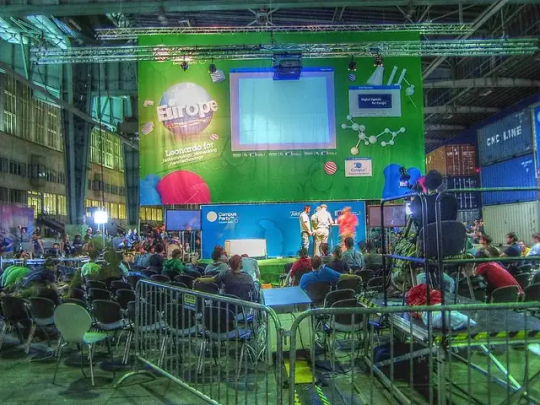
In this age where the world is advancing rapidly in every sector, a new category of tech enthusiasts has emerged. Biohacking, a DIY movement that involves manipulating one's biology to enhance human abilities, is becoming increasingly popular. With the help of technology, biohackers aim to optimize their physical and mental abilities by leveraging genetics, nutrition, exercise, and gadgets. We will now explore the concept of biohacking, its process, and some of the relevant technologies and techniques. Also, we will discuss the benefits and risks associated with biohacking and how it can change the world and society as we know it.
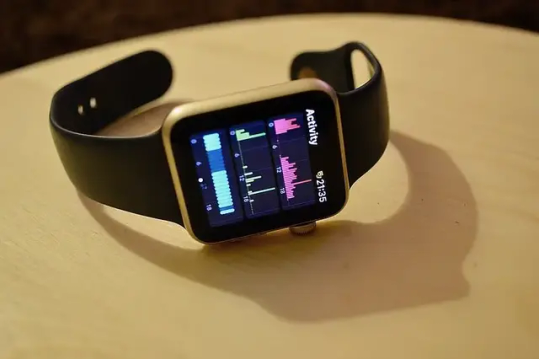
Activity Tracking on the Apple Watch. Photo by Forth With Life. Flickr.
What is biohacking?
Biohacking is defined as "DIY biology," where individuals hack or modify their biology by experimenting with different techniques and technologies to extend their physical and mental abilities. The actual process involves using science, technology, and self-experimentation to modify one’s biology to achieve specific health and wellness goals. Biohacking can be as simple as tracking your sleep and nutrition, or as complex as genetic engineering and neural stimulation.
Biohacking Process
The process of biohacking includes three main steps: Identity, Experiment, and Optimize. In the first step, biohackers identify what they want to optimize. For example, it could be cognitive function, athletic performance, or weight loss. In the second step, they experiment with different techniques, tools, and devices to achieve their desired outcome. In the final or optimization stage, biohackers analyze their data and adjust their lifestyle accordingly.
Technologies and Techniques
There are several technologies and techniques involved in biohacking. Wearable technology, such as heart rate monitors, sleep trackers, and activity trackers, provides biohackers with valuable information to analyze and optimize their lifestyles. Nootropics, smart drugs, and supplements are also used to enhance cognition. Nutrigenomics, a science that explores how nutrition and genes interact, is also used to optimize health. Implant technology, such as the implantation of chips to monitor vital signs, is also a popular area of biohacking.
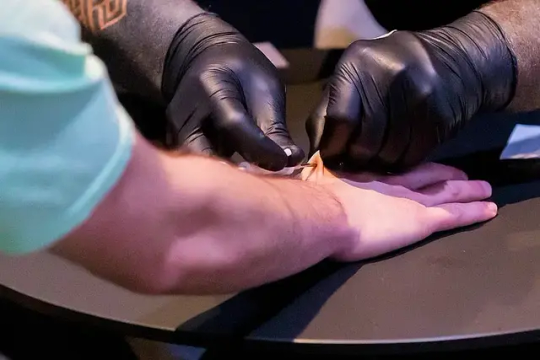
Biohax implants NFC Chips to Attendees of Digital X in Cologne. Photo by Marco Verch. Flickr.
Benefits of Biohacking
The benefits of biohacking are immense. Biohacking can optimize an individual's physical and mental performance, improve health and longevity, and connect individuals with like-minded people. Biohacking can also contribute to medical breakthroughs and drug discovery, leading to advancements in healthcare. Enhanced Cognitive Function Biohacking has the potential to boost cognitive abilities, meaning sharper memory and better focus. It involves techniques such as intermittent fasting, which improves brain function by promoting the production of ketones, a natural source of energy for the brain. Nootropics are also a popular biohacking tool that enhances cognitive function. These cognitive enhancers increase concentration, memory, and alertness while reducing stress and anxiety. Improved Physical Performance Biohacking surveys have shown a significant number of people use it to improve their physique and athletic performance. These techniques involve targeted workout regimes and the use of wearable technology to monitor fitness metrics, such as heart rate, calorie burn, and sleep patterns. The use of supplements, such as creatine and beta-alanine, can also help to enhance muscle growth and improve endurance. Optimization of Hormonal Health Biohacking also includes monitoring and optimizing hormonal balance. This can be achieved through lifestyle changes such as sleep, diet, and exercise. The use of supplements can also optimize endocrine function. For example, vitamin D and omega-3 fatty acids are essential for optimizing testosterone in males, while women can benefit from supplements such as DIM (diindolylmethane) to balance estrogen levels. Improved Quality of Life Biohacking techniques can improve overall well-being, leading to a better quality of life. These include techniques such as meditation and mindfulness practices, which can help to reduce stress and improve mental clarity. Biohacking using infrared light can help to improve sleep quality and reduce inflammation, leading to improved immune function.
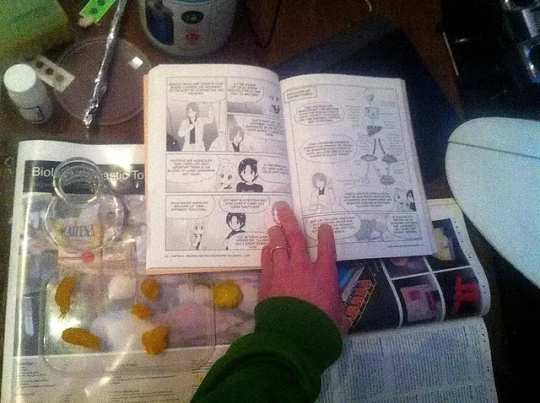
Manga guide to biohacking. Photo by ooleg. Flickr.
Risks of Biohacking
Like any other form of experimentation, there are risks associated with biohacking. These risks include adverse health effects, addiction, obtaining invalid data, financial losses, and social isolation. Due to the lack of regulation, there is also the risk of using untested or illegal substances. The potential for addiction People who engage in biohacking practices often become addicted to the products and services they use. Some of the practices involve continuous tracking of metrics such as sleep, food intake, and activity levels. While there is nothing inherently wrong with tracking, people who become too obsessed with these metrics often end up developing unhealthy habits that can lead to serious health problems. Risks to physical health Biohacking often involves taking supplements or using technology to enhance physical performance. But, some of these practices can lead to serious health conditions. For example, some substances used in biohacking can cause liver damage, while others can lead to kidney or heart problems. Anyone engaging in biohacking must take care not to do anything that could put their physical health at risk. Psychological risks While there is no doubt that biohacking can improve cognitive function and mental performance, the practice can also lead to psychological risks. The constant need to improve one's cognitive function or appearance can lead to an unhealthy preoccupation with self-improvement. This level of obsession can lead to anxiety, depression, or other serious mental health problems. Unforeseen side effects Many biohacking practices are experimental, and individuals may not know what side effects they could face in the future. The long-term effects of many biohacking practices are unknown, and there is a risk that they could lead to unforeseen complications. For example, self-administered gene editing could lead to unforeseen genetic changes that could have an impact on the human body. Lack of regulation One of the biggest risks of biohacking is the absence of regulation. Most biohacking practices are not regulated, and individuals who engage in biohacking cannot be sure of the safety or efficacy of the products or services they use. There is a risk that some products or services used in biohacking could be harmful to the human body.

Intermittent fasting. Photo by Stephen Pearson. Flickr.
Common Biohacking Techniques
There are numerous biohacking techniques you can try, depending on your individual goals and preferences. Some popular ones include: - Tracking biomarkers: monitoring your sleep quality, heart rate, blood glucose levels, and other physiological markers. - Intermittent fasting: limiting calorie intake to certain hours of the day or days of the week to increase lifespan and improve metabolic health. - Cold exposure: exposing yourself to cold water or ice to boost immune function, improve circulation, and reduce inflammation. - Nootropics: cognitive-enhancing supplements or drugs that boost memory, focus, and creativity. - Exercise: performing specific exercises to improve strength, agility, and flexibility, such as HIIT, yoga, or weightlifting.
Conclusion
Biohacking is a new and fascinating field that has the potential to revolutionize the world as we know it. It involves a process of self-experimentation, where individuals leverage technology and techniques to enhance their physical and mental abilities. Biohacking offers many benefits, from optimizing performance to improving health, but it also comes with its risks. Biohacking can contribute to advancements in healthcare and provide individuals with a sense of self-awareness and empowerment. However, it should be performed responsibly and with caution. As biohacking continues to grow in popularity, it is important to raise awareness and educate individuals about the risks and benefits. Sources: THX News & Life Extension. Read the full article
#Biohacking#Cognitivefunctionenhancement#DIYbiology#Geneticengineering#Hormonalhealthoptimization#Nootropicsandsupplements#Optimizationtechniques#Physicalperformanceimprovement#Risksandbenefitsofbiohacking#Wearabletechnology
0 notes
Text
Content Optimization Techniques: Elevate your SEO Game
In this digital age, Content is King. However, to truly reign supreme, your content must be optimized for both search engines and readers.
Content optimization is the process of using SEO Friendly Content to improve its visibility, engagement, and reach. This involves integrating relevant keywords, optimizing meta tags, structuring content clearly, including visuals, Mobile-Friendliness, and regularly updating content to meet user intent and search engine requirements. It’s essential for enhancing SEO performance and user experience.
Now, what are these terminologies that we just discussed above? Let’s know them all in detail:
Relevant Keyword: Use relevant keywords that your target audience is searching for. Use both long-tale keywords and short-tale keywords, do not do the overstuffing of keywords.
Optimizing Meta Tags: Compelling title tags and meta descriptions becomes very important for any website.
Content Structure: Organize your content with clear headings, subheadings, and bullet points.
Visuals: Including optimized images, infographics, and videos to make the webpage look more attractive and catchier.
Internal and External Links: Linking to other relevant pages on your site to create relevant multiple webpages gives the audience reach more.
Mobile-Friendliness: Ensuring content is accessible and readable on mobile devices, as not everyone carry laptops with them.
Regular Updates: Keeping content up-to-date to maintain its relevance.
“Content is King”
~Bill Gates
This quote, written by Bill Gates clearly expresses the reach of the future audience. He describes the future of the Internet as a marketplace for content. And this means that high-quality, relevant, and valuable content is the most crucial factor for achieving success in search engine optimization. Well-crafted, well-organised with a comfort zone for the audience attracts more users, meet their search intent, opens a platform for searching and navigating, all of which contribute to higher search engine rankings. In another words, Optimizing the content becomes very important for higher reach and rankings and Web Page Optimization.
Using optimized content becomes very crucial for improving your website’s visibility, driving organic traffic, and ultimately achieving your digital marketing goals. By implementing these strategies, you can create content that not only ranks well on search engine results pages (SERPs) but also resonates with your readers, providing them with valuable and relevant information.
Concluding, Content optimization is essential for enhancing your online presence and driving organic traffic. By implementing techniques such as keyword research, meta tag optimization, and incorporating multimedia elements, you can create SEO-friendly contentthat resonates with your audience. Regular updates and a focus on readability and user experience further ensure your content remains relevant and valuable.
So, what are you thinking now, embrace these SEO strategies to stay ahead in this competitive digital landscape and do not forget to give everything a try!
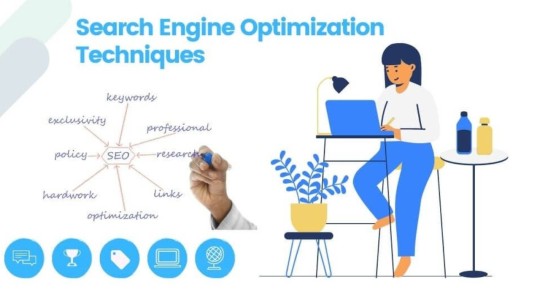
#A comprehensive guide to content optimization techniques aimed at enhancing the effectiveness and reach of digital content.#Whether you're looking to boost organic search rankings#increase user interaction#or refine your content strategy#this resource offers actionable insights and practical tips to help you achieve your content goals and drive better results.#searchengineoptimization#optimizationtechniques#makeyourrankingshigh#ehnancetheeffectiveness
1 note
·
View note
Text
Expert Tips for Perfecting 3D Models and Product Design
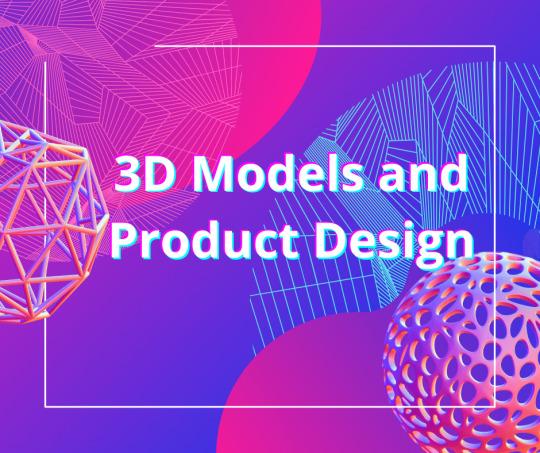
Embark on a thrilling journey into 3D modelling and product design, where the innovation potential is limitless and creativity controls are essential. The pursuit of excellence in both the development of sophisticated prototypes for manufacturing and the creation of detailed characters for animation starts with a solitary polygon. This article will reveal the strategies for mastering the art of product design and developing breathtaking 3D models. Prepare yourself as we embark on a massive journey brimming with insight, ingenuity, and novelty.
Invest in Quality Software
Before delving into the realm of 3D modeling, you must acquire the appropriate instruments for the task. Obtain industry-standard software, such as ZBrush, Blender, or Maya, which each provides a distinct set of functionalities customized for specific fields of study. Although open-source alternatives such as Blender may be economical for novices, experts may find the robust functionalities of Maya or ZBrush more suitable for complex undertakings. Always keep in mind that your software is fundamental to your creative pursuits, so make an informed decision.
Understand the Principles of Design
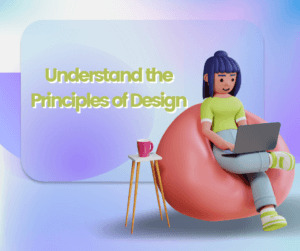
A solid foundation constructed on design principles underpins each magnificent 3D model. Develop an understanding of fundamental principles including proportion, balance, and composition to instill vitality into your artistic creations. Analyze the methodologies employed by eminent artists and designers in order to extract invaluable knowledge regarding the art of visualization. An extensive understanding of design fundamentals will elevate your work to the extraordinary, whether you are creating organic forms or constructing industrial designs. Contact 3D modeling and artwork professional
Practice Patience and Persistence
Patience is not only a desirable quality in the environment of 3D modeling, which operates at an extremely rapid tempo; it is an absolute necessity for achieving success. An artwork does not develop overnight, just as Rome did not. Embrace the iterative essence of the creative process by permitting experimentation, failure, and the acquisition of knowledge from errors. Maintain in mind that each setback represents a chance for development; therefore, obstacles shouldn't stop you from proceeding. Through sustained effort and commitment, one will progressively enhance their methodology and attain unprecedented levels of expertise.Read more.. Read the full article
#3DModeling#AdvancedTechniques#Certainly#CraftingPerfection#DesignMastery#DesignOptimization#DesignStrategies#Expertadvice#FlawlessProducts#herearetheSEOtagsseparatedbycommas:ExpertTips#ImpeccableDesigns#ModelEnhancement#ModelMastery#ModelPerfection#OptimizationTechniques#Perfecting3DModels#ProTips#ProductDesign#ProductExcellence#ProductPerfection#ProfessionalAdvice
1 note
·
View note
Photo

How I made a basketball hoop that always goes in I've wondered if it is possible to mak... #hugochamber #backboard #basketball #basketballhoop #basketballshooting #build #cncwoodworking #computationalgoemetry #diybasketballhoop #fusion360 #homemadebasketball #homemadebasketballbackboard #howtomakeabasketballhoop #howtomakebasketballhoop #optimization #optimizationtechniques #programming #python #rebound #score #sheetmetalbending #shop #swoosh #tormach #tormach1100mx Source: https://hugochamber.org/how-i-made-a-basketball-hoop-that-always-goes-in/?feed_id=17665&_unique_id=5f3d1d0bc4c25
0 notes
Text
Social Media : Optimization Secrets To Boost The Conversion | Learn Social Media Marketing
https://www.youtube.com/watch?v=pKXcPYy7QFs
0 notes
Photo

How I made a basketball hoop that always goes in I've wondered if it is possible to mak... #surnativa #backboard #basketball #basketballhoop #basketballshooting #build #cncwoodworking #computationalgoemetry #diybasketballhoop #fusion360 #homemadebasketball #homemadebasketballbackboard #howtomakeabasketballhoop #howtomakebasketballhoop #optimization #optimizationtechniques #programming #python #rebound #score #sheetmetalbending #shop #swoosh #tormach #tormach1100mx Source: https://surnativa.com/how-i-made-a-basketball-hoop-that-always-goes-in/?feed_id=5860&_unique_id=5f28dfefa5332
0 notes
Photo
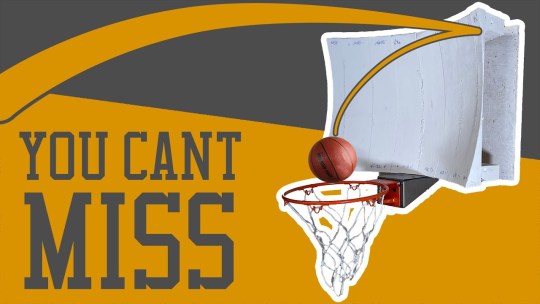
How I made a basketball hoop that always goes in I've wondered if it is possible to mak... #blogema #backboard #basketball #basketballhoop #basketballshooting #build #cncwoodworking #computationalgoemetry #diybasketballhoop #fusion360 #homemadebasketball #homemadebasketballbackboard #howtomakeabasketballhoop #howtomakebasketballhoop #optimization #optimizationtechniques #programming #python #rebound #score #sheetmetalbending #shop #swoosh #tormach #tormach1100mx
0 notes
Link
0 notes
Photo
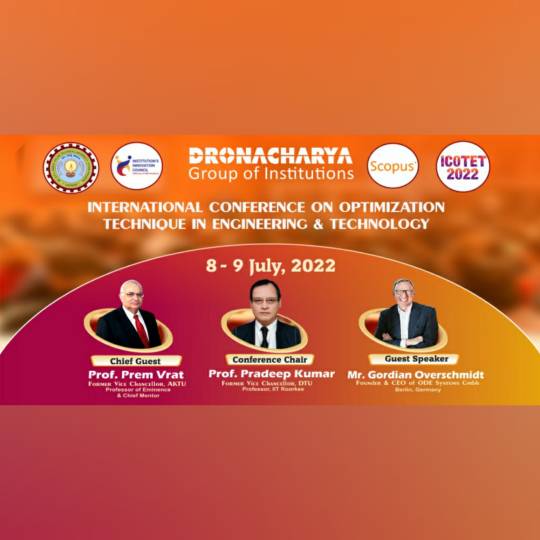
International Conference on Optimization Techniques in Engineering and Technology (ICOTET 2022) is being organized on 8th – 9th July 2022
Hosted By: Dronacharya Group of Institutions, Greater Noida, UP, India.
Link: https://www.icotet2022.com/
Chief Guest: @Prof. Prem Vrat, Professor of Eminence
Conference Chair: @Prof. Pradeep Kumar, Former Vice Chancellor, DTU. Professor, IIT Roorkee
Guest Speaker: @Mr. Gordian Overschmidt, Founder & CEO of ODE Systems, Berlin, Germany.
#internationalConference
#ICOTET2022
#callforpaper
#scopus
#speakers
#optimizationtechniques
#engineering
#technology
#AICTEINDIA
#EduMinOfIndia #institutioninnovationcouncil #mhrdinnovationcell #DronacharyaGroupofInstitutions #bestengineeringcollegeindelhincr #bestengineeringcollegeingreaterNoida #topplacementcollegeindelhincr #greaternoida #delhincr #jee2022 #bestplacementcollegeindelhincr #multipleplacement
1 note
·
View note
Photo

International Conference on Optimization Techniques in Engineering and Technology (ICOTET 2022) is being organized on 8th – 9th July 2022
Hosted By: Dronacharya Group of Institutions, Greater Noida, UP, India.
Link: https://www.icotet2022.com/
Conference Chair: @Prof. Pradeep Kumar, Former Vice Chancellor, DTU. Professor, IIT Roorkee
#internationalConference
#ICOTET2022
#callforpaper
#scopus
#speakers
#optimizationtechniques
#engineering
#technology
#DTU
#IITroorkee
#AICTEINDIA
#EduMinOfIndia #institutioninnovationcouncil #mhrdinnovationcell #DronacharyaGroupofInstitutions #bestengineeringcollegeindelhincr #bestengineeringcollegeingreaterNoida #topplacementcollegeindelhincr #greaternoida #delhincr #jee2022 #bestplacementcollegeindelhincr #multipleplacement
1 note
·
View note
Photo

International Conference on Optimization Techniques in Engineering and Technology (ICOTET 2022) is being organized on 8th – 9th July 2022
Hosted By: Dronacharya Group of Institutions, Greater Noida, UP, India.
Link: https://www.icotet2022.com/
Guest Speaker: @Mr. Gordian Overschmidt, Founder & CEO of ODE Systems, Berlin, Germany.
#internationalConference
#ICOTET2022
#callforpaper
#scopus
#speakers
#ODESystems
#optimizationtechniques
#engineering
#technology
#AICTEINDIA
#EduMinOfIndia
#iitcouncil #institutioninnovationcouncil #mhrdinnovationcell #DronacharyaGroupofInstitutions #bestengineeringcollegeindelhincr #bestengineeringcollegeingreaterNoida #topplacementcollegeindelhincr #greaternoida #delhincr #jee2022 #bestplacementcollegeindelhincr #multipleplacement
1 note
·
View note